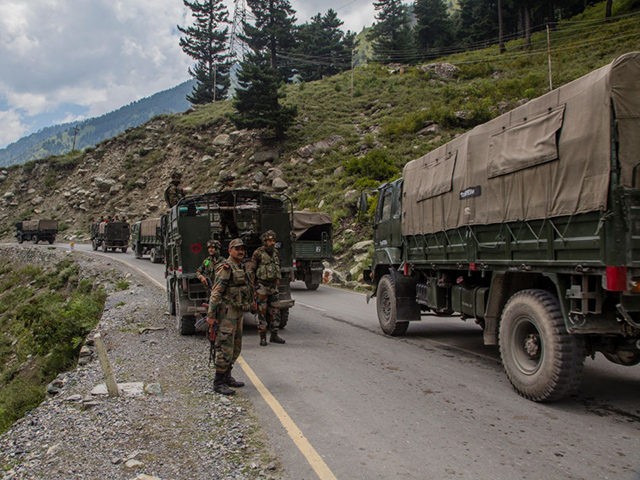Indian Defense Minister Rajnath Singh said on Tuesday that the budget for building roads and bridges along the Chinese border will be doubled in response to China’s rapid infrastructure improvements on the other side.
The Chinese frequently criticize Indian construction projects near the border as provocative — occasionally leading to physical, but so far non-military, altercations between Indian and Chinese troops in the Himalayas.
“Our government too has stepped up the budget for border infrastructure development to about double the previous levels. As a result, more roads and bridges have been completed in the border areas,” Singh told a meeting of the Indian parliament, without providing more precise details.
Singh also said that despite much talk of de-escalation and disengagement along the border, formally known as the Line of Actual Control (LAC), China has “mobilized a large number of troops and armaments along the LAC as well as in the depth areas,” so Indian forces have “made appropriate counter deployments in these areas to ensure that India’s security interests are fully protected.”
NDTV interpreted Singh’s parliamentary testimony as a “strong warning to China,” although the defense minister also stressed that India “remains committed to the peaceful resolution of the current situation.”
He said Indian forces have repulsed several Chinese attempts to violate the LAC, incursions he described as “violent conduct” by Chinese forces that violated “all mutually agreed norms.”
“We want peace but we are ready for all eventualities. We should be confident that our armed forces will handle the situation successfully,” Singh said.
Indian officials said on Tuesday they are concerned about reports of troops from the Chinese People’s Liberation Army (PLA) laying fiber optic cables around Ladakh, the site of a bloody hand-to-hand battle between Indian and Chinese soldiers in June. The cables would provide secure lines of communication between Chinese units along the LAC.
“They have been laying optical fibre cables on the southern bank at breakneck speed,” one Indian official said of the Chinese effort. The Chinese Foreign Ministry responded by denying any knowledge of a cabling project in the area.
The South China Morning Post (SCMP) quoted Indian officials acknowledging that the situation along the LAC is extremely tense, and high-altitude confrontations could go wrong in any number of ways, but they felt China would be unwilling to seriously negotiate until it accepts that India will not be intimidated away from its positions.
As the Indian officers explained, roads and bridges are essential for moving the large number of men needed for mountain warfare into position, since it is difficult for them to carry equipment over the rough terrain, while air support and artillery are unreliable in conditions of thin atmosphere and poor visibility.
“Mountains eat up men, that is the bottom line for all such warfare,” said a former Indian military commander with experience in the region.
Indian Prime Minister Narendra Modi is placing a great deal of emphasis on infrastructure development ahead of elections in October and November, ranging from roads and airports to power grids and sewage treatment. Modi has said one of his objectives is to connect every part of India and make the country more self-sufficient.

COMMENTS
Please let us know if you're having issues with commenting.